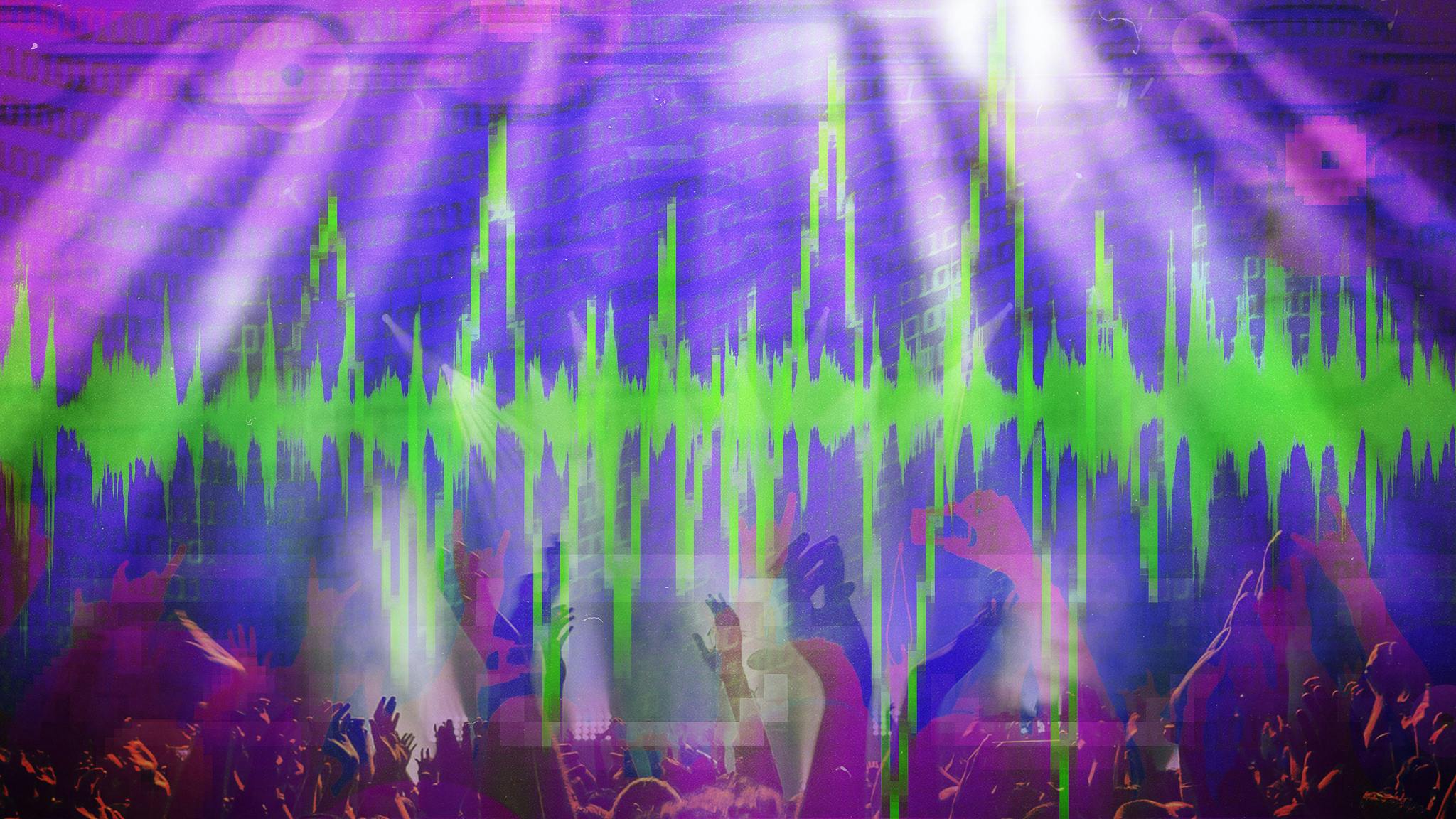Rat Boy, who came onto the indie music scene in 2015, is onboard with TokenTraxx already. He’s also a multimedia artist, and has designed and visualised Dystopia World, a metaworld of sorts where “four gangs battle it out in everlasting turf wars”. It will feature “drops” that include NFT cars, weapons, hide-outs and more, along with soundtracks written by Rat Boy and friends.
Other recent drops include TraxxStemz, a unique format of NFTs which is set to challenge the perceptions of creation, ownership, rarity and value of music and art. The project is launching with an NFT collection named “Revolution” in partnership with the band, Graffiti6 later this summer. The collection has 3,030 distinctive pieces of combined music and art, with each NFT formed from the layers of an original Graffiti6 recording and its remixes, randomly combined to create unique versions – each is augmented by randomly generated artwork.
Meanwhile, OpenLab, an innovative music and arts platform based in Ibiza famed for discovering new artists, announced that on July 29, a highly limited number of OpenLab Future Passes will be made available through TokenTraxx. The OpenLab Future Pass will offer holders a benefits like VIP access to events and exclusive online content.OpenLab will also be delivering regular drops of collaborative audio-visual collectibles with leading artists as the first of TokenTraxx’s curatorial partners.
According to Luke, “improving the connectivity and the experience between the artist and fan” is one of the areas where NFTs can be a very instrumental force – a key focus for TokenTraxx. The NFT collectibles in Rat Boy’s Dystopia World will be purchasable with cryptocurrency MATIC, which is the native cryptocoin of Polygon. If crypto wallets and all of that sound like a confusing intricate headache, well Luke (and Mila and Simon) agree. Luke says they’re looking to simplify how wallets are accessed: “We’re very close to launching Visa, and MasterCard payments for these NFT experiences too.”
But whoa, hang on a minute, didn’t crypto crash and burn into a million digital pixels recently? Rare things like records tend to keep value (if they haven’t been played and the artist doesn’t become a shit person), so why would we invest in something so volatile? “It’s a good question”, says Cheeze’s Simon.
“We decided to use USDC as a stable coin, because USDC is fast becoming the kind of Visa brand of the blockchain world. As a stablecoin, its value is pegged to real currency, too. As a photographer. If you want to sell a photograph for £1,000 today, using a crypto like Ethereum might mean that tomorrow, it’s suddenly worth £200. With USDC you know what you’re going to get.”
Luke says that TokenTraxx will allow the artist to mint on different blockchains, which have their own native cryptocurrency. “We’re purists,” he asserts. For Mila, “Crypto goes into cycles, volatility can have positive and negative impacts but if a project is built the right way it should be able to continue independently of the cycles that present.” Luke also reassures that “at TokenTraxx we’ve got personal relationships with the artists. There are phone numbers that people can call if there’s concerns about what’s happening in crypto. We have a deep understanding of the industry, and we can talk it through.”
As of April, EarthWeb estimated that around 360,000 people own NFTs. Roughly the same number of people live in Coventry. Which shows just how new and emerging the industry is. But undeniably, artists, businesses, and fans are increasingly flocking to NFT marketplaces like TokenTraxx and Cheeze. As creatives do, they’re looking at the new, the next. They’d also like to own their art and make better money from it. And who can blame them? Chances are, where the art goes, fans are likely to follow.
This article originally appeared on The Face.
